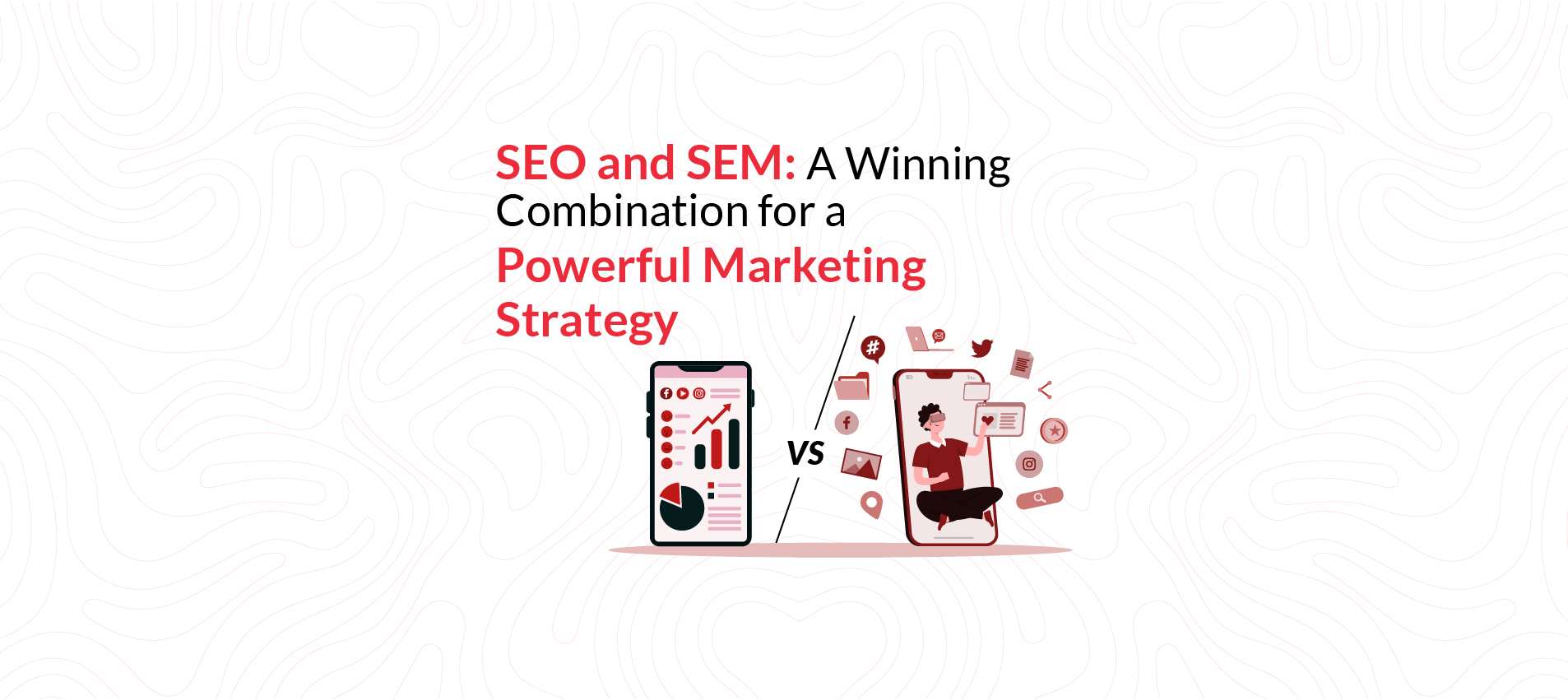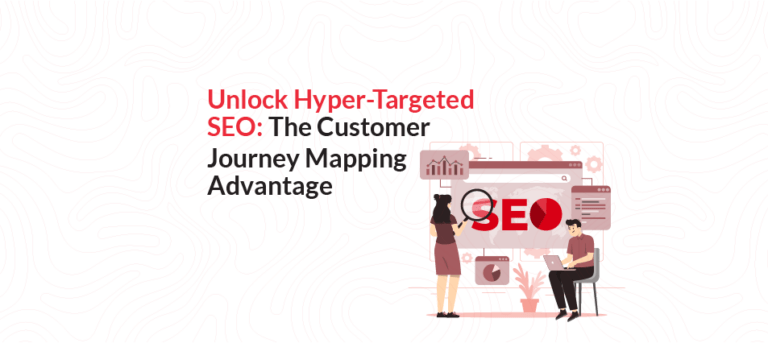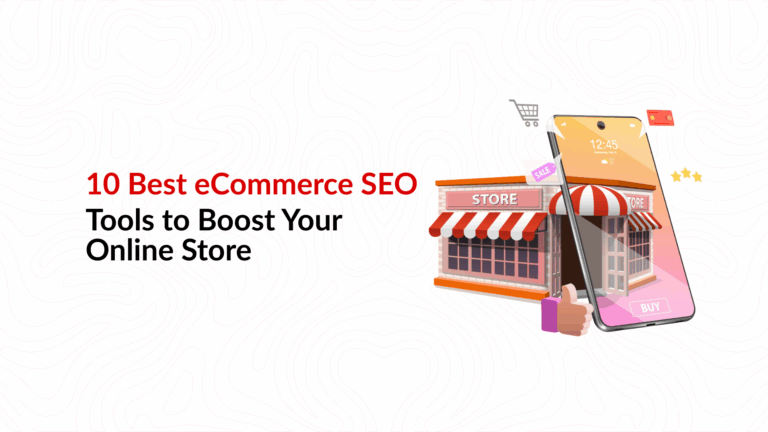Mastering SEO and SEM for a Winning Marketing Strategy
Today, businesses have to tap into the power of SEO and SEM to drive website traffic and enhance online visibility. In fact, search engines are now the primary gateway through which users look for information, products, and services. Mastering SEO and SEM in digital marketing is, therefore, important for long-term success.
While SEO is purely about organic growth, SEM refers to paid strategies for resulting traffic. To that end, one must distinguish between SEO and SEM so that their implementation can be effectively combined in order to create a powerful marketing strategy that maximizes the amount of traffic and conversions.
A balanced strategy for the business, where search engine optimization techniques are mixed and used with paid marketing for increasing both short-term as well as long-term profits. SEO and SEM can help businesses boost their rankings in search results, reach the right audience, and dominate their competitors.
Defining SEO and SEM
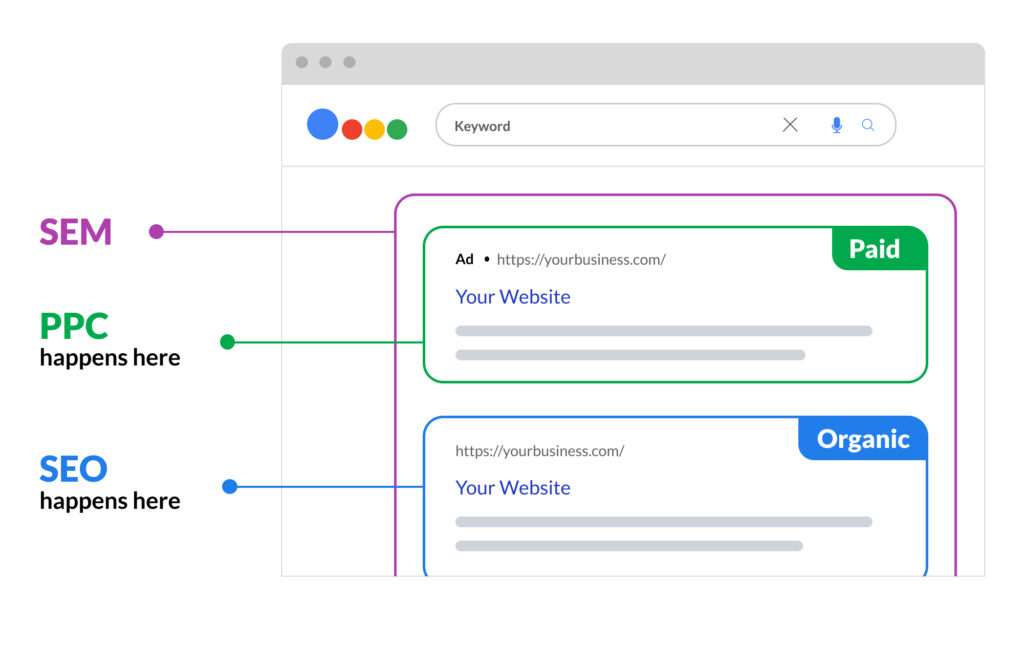
What is SEO?
The process of optimizing a website to rank higher in organic search engine results is called Search Engine Optimization. SEO, therefore, utilizes a system of various search engine optimization techniques including:
- Keyword Research– Identifying what users search with.
- On-page SEO- Quality content creation, Meta tags optimization, and User experience improvement.
- Off-page SEO– Building backlinks, increased domain authority.
- Technical SEO- Improving the speed of a website, mobile-friendliness, and indexing capabilities.
For instance, if a company wants to rank for “best running shoes,” a relevant content creation regarding the keyword, optimize your title tag, and have a page that loads quickly. The main objective of SEO is organic visibility with time, creating quality content, and user interaction. This will lead to higher ranking on the search engines.
What is SEM?
Search Engine Marketing (SEM) is paid advertising that helps to showcase listing of a website in search results. SEM includes various activities such as PPC ads, where organizations bid for advertisement placement on the search engine result page.
Key components of SEM are:
- PPC Campaign: Running paid advertisements on platforms like Google Ads.
- Keyword Bidding: Determining the CPC for targeted keywords.
- Ad Copy Optimization: Making ads more engaging and clickable.
- Audience Targeting: Identify the correct demographic and geographic audience to connect with more.
For instance, an online shopping website selling exercise equipment may utilize SEM to display ads across the keyword “buy treadmill online” and this advertisement will appear at the top of the search results page. As compared with SEO, which might take months or even years to actually produce working results, SEM would produce immediate traffic from targeted paid ads and enable companies to gain rapid visibility.
Differences Between SEO and SEM
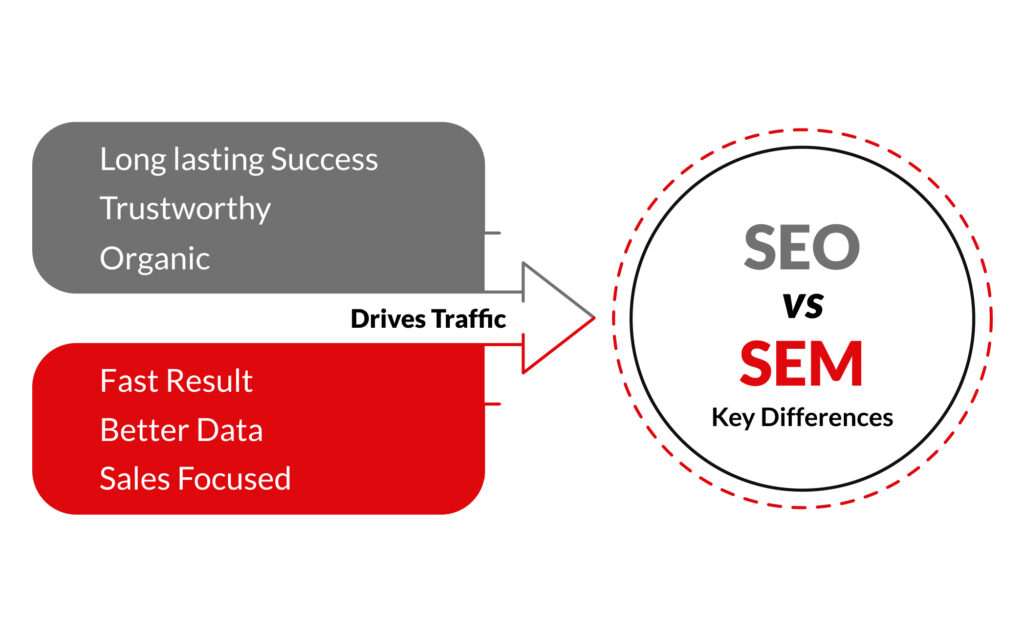
Though both SEO and SEM increase search engine visibility, it does so in two very different ways:
- Cost Differentials : While SEO grows organically, and therefore depends less on advertising, SEM is an advert, hence to be used constantly it would involve a cost.
- Time Lag to Attain Result: SEO may take time to generate results. In fact, SEO could take even months. However, SEM will produce instant traffic through an advertisement.
- Strategy Used: SEO aims at content optimization and link building. SEM targets keyword bidding and the use of advertisements.
In short, SEO will create a strong organic rank which takes months or even years for fruits to come out. On the other hand, SEM delivers immediate effects but requires a constant flow of funds for sustaining advertisement campaigns.
SEO vs SEM: When to Use What?
When to use SEO:The application of SEO would be focused when growing sustainable and long-term, and for increasing credibility with lesser dependency on paid traffic. In addition, it helps in creating content that is more rankable and assists the development of organic authority.
When to Use SEM: SEM is useful when launching a new product, targeting seasonal promotions, or reaching a specific audience quickly. It’s the perfect tool for getting immediate traffic and testing different strategies before committing to organic efforts.
For example, a travel agency may use SEO to rank for “best holiday destinations” but leverage SEM during peak seasons to advertise special holiday packages.
Difference between SEO and SEM
| Category | SEO (Search Engine Optimization) | SEM (Search Engine Marketing) |
| Success Timeline | Long-Term Success: Builds over time with lasting effects | Quick Wins: Delivers quick visibility through paid ads |
| Credibility | Trust:Organic rankings are considered more trustworthy | Better Data: Offers measurable insights for optimization |
| Approach | Organic: Focuses on unpaid strategies to improve rankings | Sales-Focused: Aims at conversions through paid campaigns |
Challenges of SEO vs SEM
SEO Challenges
Although there are many advantages of SEO, it is also associated with some disadvantages.
- It might take some time to rank for competitive keywords, and in some cases, longer if your website is new and lacks backlinks.
- It’s very tough to compete with the established websites, especially when competing in the most competitive sectors, such as e-commerce.
- Algorithm Changes: Algorithm search engine changes frequently and needs constant update of SEO strategies. Google updates its algorithm very frequently to improve its user experience, and this may influence rankings.
Challenges in SEM
SEM is not without its challenges as well:
- Budget: Running paid campaigns demand a huge amount of investment. For small businesses or startups, it is very challenging to compete with huge competition in the paid search arena.
- Ad Fatigue: The people tend to ignore the same advertisements that are repeated and due to which it becomes hard for the businesses to sustain their performance in terms of advertisements.
- Paid Spaces Competition: It leads to unhealthy bidding competitions wherein the CPC gets very high and the smaller companies cannot afford the CPC when competing with larger ones.
SEO and SEM in Digital Marketing Agency
Most of the digital marketing agencies use SEO and SEM together as support systems of their marketing strategy. Both SEO and SEM assist a business in increasing their visibility to have more chances for short-term and/or long-term success.
How SEO and SEM Work Together?
Structured SEO and SEM strategy can ensure maximal visibility and results. Using both approaches together can help businesses benefit from the following:
- SEM can be used to initiate traffic; SEO builds long-term rankings. Together, this combination ensures that businesses can achieve instant visibility through the involvement of long-term investments for future organic growth.
- Use Data-Driven Insights: SEM provides critical data that will refine the SEO content strategy. A great example of this is when analyzing PPC keywords, as businesses can perfect their SEO keyword targeting. In addition, marketers get to understand which keywords have the potential of attracting traffic, converting, and earning a return on investment.
- Using these two strategies can also help businesses optimize the effectiveness of their campaigns, refine their content and improve overall visibility.
Advantages of Combining SEO and SEM
Increased Visibility and Traffic: SEM gives instant visibility but SEO ensures long-term results. It helps businesses gain high traffic spikes and long-term visibility.
Balancing Short-Term and Long-Term Objectives: While SEM works for quick conversions, SEO also ensures that your business is gaining credibility over time. For example, an online shopping company may use SEM to promote new products, while relying on SEO for product page organic rankings and long-term traffic.
This simply means that SEO is the start of long-term growth, while SEM is much faster in terms of generating visibility and then revenue. When used together, the two are almost unbeatable in terms of their effectiveness.
Optimal Cost: With optimized SEO, time is shortened in relying on paid ads.
Future of SEO and SEM in Digital Marketing
Advancements in technology will drive SEO vs SEM further in digital marketing. There are some trends that are underway and mark the future:
AI and machine learning: Rankings are fine-tuned by using AI. Dynamic SEO is developed, and all SEO strategies shall be more focused on machine learning and AI to enhance user engagement and experience.
Voice Search Optimization: With the increased adoption of smart devices and voice assistants, voice search is the new norm of SEO. There will be a need for change in the kind of SEO adopted by businesses concerning conversational query and long-tail keywords during voice searches.
Automation in SEM: AI is transforming the ways of SEMs with AI-based bidding and placements. Businesses can now use automatic tools to bid, target a particular audience, and improve performance on ads.
Businesses, in a rapidly changing digital world, must remain updated on all the latest trends and innovations in SEO and SEM to remain competitive in this space. Considering AI-driven search algorithms and the increasing importance of voice search, digital marketers must learn to meet new challenges and continuously optimize their strategies.
Conclusion: Leveraging SEO and SEM for Long term Success
Hence, a balance between SEO and SEM is required for a successful digital marketing approach. The long-term base of growth would be through SEO, but SEM is needed for short-term pushes that guarantee immediate visibility. This helps marketers to allocate the right resources in both paid and organic strategies to maximize effectiveness.
This way, through search engine optimization techniques accompanied by strategic placements of advertisements, businesses can elevate their brand authority, the quantity of potential conversion, and withstand the turmoil in the new high-speed digital era. By considering SEM and SEO, businesses need to make appropriate choices for opportunities and assess in advance if these opportunities can endure growth and refine their approaches accordingly to digital marketing. Long-term success in search engine marketing is very easy for a company.

